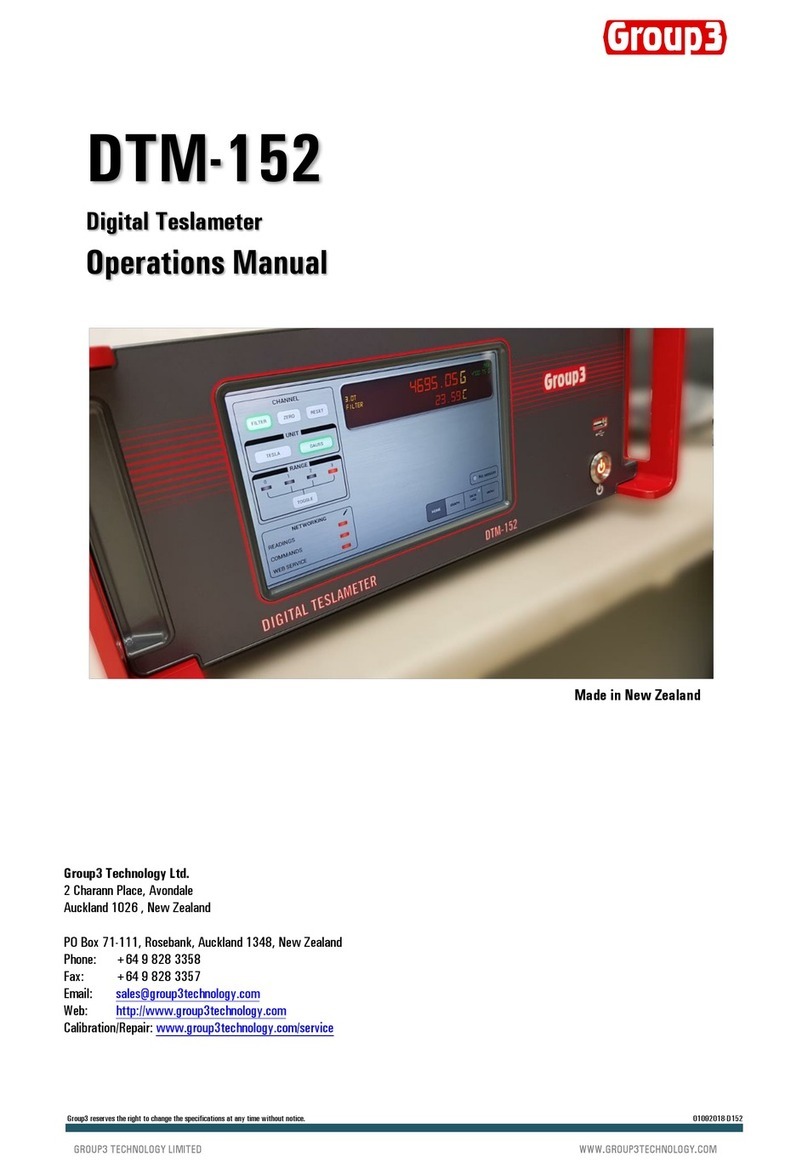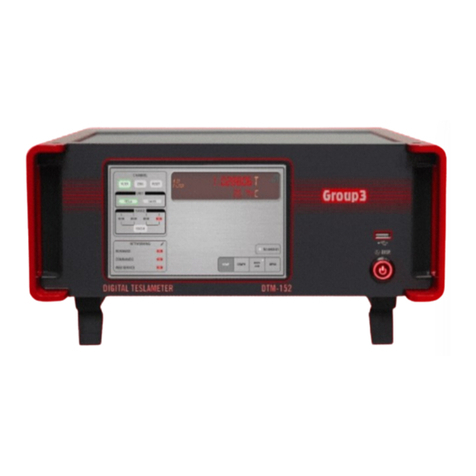Additional specifications with communication options
Digital interfacing serial option: RS-232C and fiber optic;
parallel option: IEEE-488 General Purpose Interface Bus
System orientation Group3 Communication Loop (G3CL) using serial ports,
simple loop for 31 devices no multiplexer required:
GPIB with IEEE-488 option.
Digital data format ASCII input commands and output responses
Commands requests for field value; setting and inspection of display and control modes;
field measurement triggering; entry of numerical values; setting units. output data format,
and filter characteristics; test commands
Output responses field value in tesla or gauss followed by optional T or G and carriage return/line feed:
numerical and system status data requested by commands: messages
Serial bit rate 16 standard rates. switch selected, 50, 110, 134.5 1 TO, 200, 300,
600 900, 1050, 1200, 1800, 2000 2400. 4800. 9600, 19200 baud
Fiber optic cable Hewlett-Packard HFBR-3500, 60 meters max
IEEE-488 functions SH1 source handshake capability
AH1 acceptor handshake capability
T5 talker (basic talker, serial poll, talk-only mode, unaddressed to talk if addressed to
listen)
TE0 no address extension talker capability
L4 listener (basic listener, unaddressed to listen if addressed to talk)
LEO no address extension listener capability
SR1 service request capability
RLO no remote local capability
PP1 parallel poll capability (configured by controller)
DC 1 device clear capability
DT1 device clear capability
CO no controller capability
GPIB connector standard Amphenol 57-20240 with metric standoffs
DTM-133 User’s Manual 2-3
































